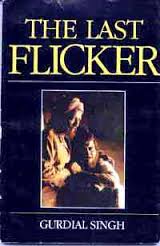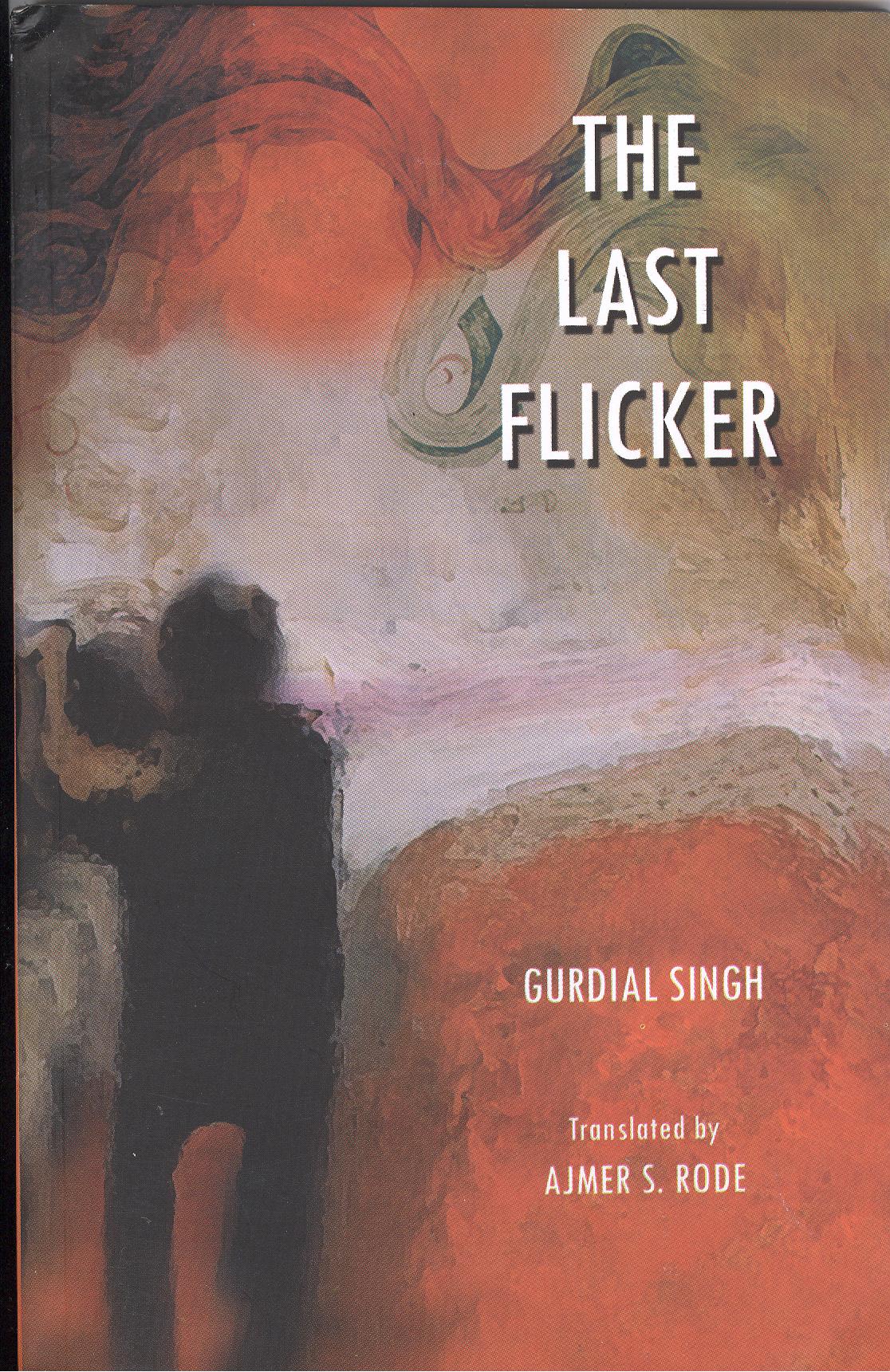 The Last Flicker is English translation (by Ajmer Rode) of Punjabi novel Marhi Da Deeva, a modern classic that gave a new turn to Punjabi fiction after its publication in 1964. The novel is written by Gurdial Singh one of the most honored and awarded writers in Punjabi. He is recipient of almost all major literary awards of the country including the Bharatiya Jnanpith Award (1999). The novel narrates the story of Jagsir Singh a Dalit man, who suffers the cruelty of caste system, social hierarchy, and economic exploitation in Indian society. The plot is constructed masterfully and brings forth the ravages of feudal traditions still prevalent in the Punjabi society,
The Last Flicker is English translation (by Ajmer Rode) of Punjabi novel Marhi Da Deeva, a modern classic that gave a new turn to Punjabi fiction after its publication in 1964. The novel is written by Gurdial Singh one of the most honored and awarded writers in Punjabi. He is recipient of almost all major literary awards of the country including the Bharatiya Jnanpith Award (1999). The novel narrates the story of Jagsir Singh a Dalit man, who suffers the cruelty of caste system, social hierarchy, and economic exploitation in Indian society. The plot is constructed masterfully and brings forth the ravages of feudal traditions still prevalent in the Punjabi society,
The first edition of the translation was published by the Sahitya Akademy of India with a cover showing a scene from a Punjabi film based on the novel.
The second edition was published in 2010 by the National Book Trust of India.
 The translation has been a subject of several critical discussions. Professor Jeremy Munday, professor of Translation Studies at the University of Leeds, UK, has discussed it in the third edition of his book Introducing Translation Studies (Routledge, London and New York, 2012). Under section, “Case study” at the end of chapter, “Cultural and ideological turns”. Munday says,
The translation has been a subject of several critical discussions. Professor Jeremy Munday, professor of Translation Studies at the University of Leeds, UK, has discussed it in the third edition of his book Introducing Translation Studies (Routledge, London and New York, 2012). Under section, “Case study” at the end of chapter, “Cultural and ideological turns”. Munday says,
“What the translator has done is to translate the regional and social dialect of a small village community with the sociolect of urban working-class North America, where he has lived for several years.”
Rana Nayar , professor and chairperson at the Department of English and Cultural Studies, Punjab University, Chandigarh, has expressed a similar opinion in his recent book INTER-SECTIONS published by the Orient BlackSwan, Hydrabad, India, 2012. In chapter 10 and under section, The Last Flicker: A Case Study of Cultural Dislocation, Mr. Nayar argues that translator has dislocated the source culture (Punjabi) by using an urban idiom of North American English. “As a result, we have this somewhat incongruous, if not anachronistic, situation where characters residing in a remote village in Punjab speak the same idiom that inhabitants of New York or Montreal often use.”
While I respect the insights and criticisms by Munday and Nayar I am unable to agree with them fully. My translation is audience oriented -I had an audience before me and it was international. My main concern was to preserve and transfer emotional content -as far as I could- of Punjabi utterings without worrying about any cultural dislocations. And I preferred to use the type of English idiom I knew best.
Ajmer Rode

On receiving criticism on his translation of Gurdial Singh’s Marhi da Deeva, Ajmer Rode resorted to explaining his stance on his website. Here’s the link – http://bit.ly/2E3dd7M